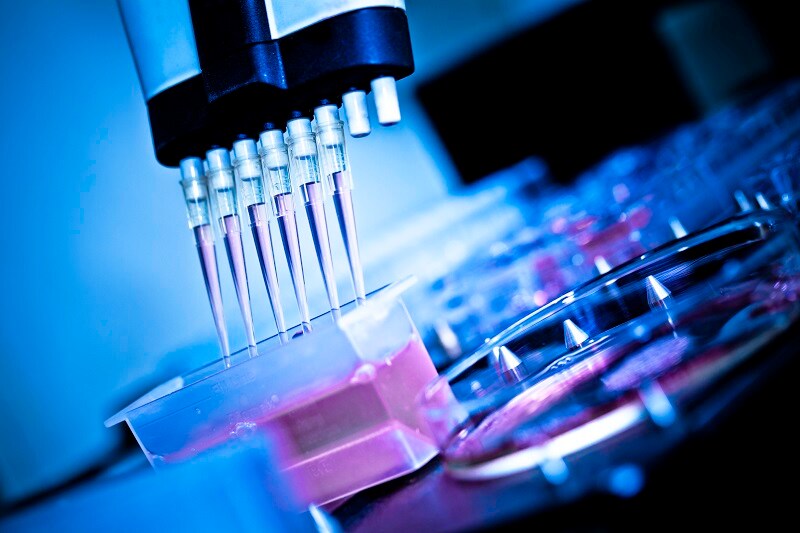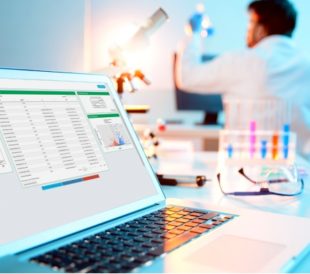Exploring how automated solutions are transforming productivity and accelerating success in the modern laboratory
Automated workflows allow laboratories to achieve levels of throughput, efficiency and reproducibility not possible with manual processes, enabling the collection of high-quality data on an unprecedented scale.
While automation opens up a wealth of opportunities for workflow optimization, many laboratories overlook the importance of using optimal digital solutions to manage their data and processes. In particular, those with fragmented informatics systems are less able to benefit from all of the advantages lab automation offers. Fortunately, ongoing advances in digital science, including laboratory information management systems (LIMS) and intelligent workflow scheduling software, are helping laboratories maximize these benefits through integrated data and process management.
Assuring quality and compliance through enhanced data and process management
Modern digital solutions help organizations get the most from automated workflows by bringing people, processes, and technology together in a single integrated ecosystem. As such, the latest LIMS deliver considerable improvements in data integrity, particularly in terms of findability, accessibility, interoperability and reusability (so-called FAIR data principles).
Together, automation and laboratory informatics solutions such as Thermo Scientific™ SampleManager LIMS™ software enhance data integrity by taking manual error out of the equation. With information organized centrally, data gathered by sensors or automated equipment at each stage of production is logged directly in the system, eliminating the transcription errors that can occur in manual workflows. This integrated approach also allows data from different sources to be stored in a standardized format, which can be easily shared between teams to support cross-collaboration. As well as improving data quality, the powerful functionality in modern LIMS helps laboratories simplify results access and interpretation by making information easier to find and report.
Combining informatics and automated solutions in this way allows pharmaceutical manufacturers to benefit from the enhanced data integrity and traceability offered by barcode tracking systems, for example. By automatically tracking products throughout their manufacture, these automated systems provide accurate, up-to-date information with which to quickly and easily identify batches affected by production issues such as raw material contamination. With high-quality data at their fingertips, manufacturers are better able to maintain product quality and ensure regulatory compliance.
Additional quality and performance improvements can be realized through the use of intelligent workflow scheduling solutions. Modern event-driven scheduling systems, such as Thermo Scientific™ Momentum™ Workflow Scheduling Software, use real-time laboratory data to trigger or modify automated processes on-the-fly. By initiating decisions based on dynamic process logic, workflow scheduling systems can be used to achieve superior results across a wide range of applications – ensuring, for example, that cell culture microplates achieve optimal confluence, or cell lines are seeded into specific plate wells based on attributes such as users or dates.
Driving workflow efficiencies using integrated digital solutions
Integrating automation with digital solutions such as LIMS and workflow scheduling software gives laboratories access to vast quantities of workflow and environmental data with which to troubleshoot problems, optimize processes and ultimately boost productivity. By drawing on data sources such as batch testing results, instrument metadata, and temperature and humidity sensor readouts, laboratories can use these digital tools to prevent unscheduled downtime and enhance operational efficiency.
Take the liquid chromatography quality control (QC) workflows used in pharmaceutical production, for example. Small changes in instrument parameters such as high backpressures or increased baseline noise can be early signs that performance is trending downwards. Modern LIMS can track and trend this data, providing real-time alerts on system performance so that analysts can take preventative action or plan timely maintenance. Combined with workflow scheduling software, these powerful tools can be used to automatically bring equipment offline, switch instruments to manual use, or divert workflows to alternative systems. When applied to eluent monitoring, for instance, this approach can be used to support automatic stock reordering, helping laboratories avoid workflow disruption by ensuring vital reagents never run out.
Advances in artificial intelligence and machine learning are taking this predictive insight to an even higher level, allowing laboratories to build and analyze large datasets to identify trends and establish underlying causes of persistent performance issues faster than ever before.
Realizing the power of lab automation and digitalization
Automated workflows are pushing the limits of laboratory throughput, efficiency and reproducibility, enabling data collection on an unprecedented scale. However, to unlock the true potential of automation, laboratories must use the right digital tools for data and process management. Modern integrated informatics solutions can be used to realize these benefits, helping laboratories safeguard data integrity, encourage cross-collaboration and drive process optimization.
Join our webcast to learn more about how automated science – through digital solutions, lab automation, and artificial intelligence – is critical to accelerating laboratory productivity and unlocking innovation. Look out for the next blog in our lab automation series, focusing on how advances in automated technologies are accelerating research through improved capacity, consistency and productivity.



Leave a Reply